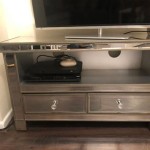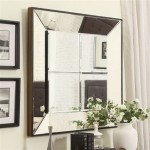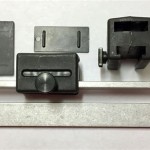Illuminating Reflections: Optimal Lighting Placement for Bathroom Mirrors
Bathroom mirror lighting often presents a challenge. The goal is to provide adequate illumination for tasks such as shaving, applying makeup, and other grooming routines, while also creating a comfortable and aesthetically pleasing atmosphere. Poor lighting can result in inaccurate color perception, harsh shadows, and eye strain. Effective bathroom mirror lighting requires careful consideration of fixture types, placement, and the desired ambiance.
The placement of lighting fixtures around a bathroom mirror significantly impacts the user experience. Improper placement can cast unflattering shadows, distort facial features, and render grooming tasks difficult. The ideal configuration aims to provide even, balanced light across the face, minimizing shadows and ensuring accurate color rendering. Before making any installations, it is important to consider the size and shape of the mirror, the overall dimensions of the bathroom, and the intended use of the space.
Sidelighting as the Primary Approach
Sidelighting, achieved through vertical fixtures mounted on either side of the mirror, is widely recognized as the most effective method for illuminating the face evenly. This approach minimizes shadows and provides balanced illumination, mimicking natural light. The key is to choose fixtures that emit a soft, diffused light. Bare bulbs or harsh spotlights should be avoided as they can create unflattering shadows and glare. Sconces or vertical light bars are popular choices for sidelighting, offering both functionality and aesthetic appeal.
When installing sidelights, the vertical placement is critical. The center of the fixtures should be positioned at approximately eye level to avoid casting shadows either above or below the face. The distance between the fixtures and the mirror will depend on the size of the mirror and the width of the vanity. As a general guideline, the fixtures should be spaced approximately 24 to 30 inches apart. The brightness of the sidelights is equally important. A combined lumen output of around 1600-2400 lumens (equivalent to approximately 100-150 watts incandescent) is typically recommended for adequate illumination.
The specific type of bulb used in the sidelights also impacts the quality of light. LED bulbs are a popular choice due to their energy efficiency, long lifespan, and versatility in color temperature. A color rendering index (CRI) of 90 or higher is recommended for accurate color perception, which is particularly important for tasks such as makeup application. The color temperature, measured in Kelvin (K), affects the warmth or coolness of the light. A color temperature of around 3000-3500K (warm white) is generally preferred for bathrooms, creating a comfortable and inviting atmosphere. It is important to select bulbs with consistent color temperature to ensure a uniform lighting effect.
Beyond functionality, sidelights can also contribute significantly to the aesthetic appeal of the bathroom. There are numerous styles and finishes available, allowing the fixtures to complement the overall design of the space. From sleek and modern designs to more traditional and ornate options, the choices are virtually limitless. The selection of sidelights should be guided by the overall aesthetic of the bathroom, ensuring a cohesive and harmonious design.
Overhead Lighting as a Complementary Element
While sidelighting is crucial for providing even facial illumination, overhead lighting can serve as a valuable complementary element. Overhead fixtures can brighten the entire bathroom and add ambient light, reducing shadows and enhancing visibility. Recessed lighting is a common choice for overhead illumination, providing a clean and unobtrusive look. Alternatively, a decorative pendant light or chandelier can add a touch of elegance and visual interest to the space.
When incorporating overhead lighting, it is important to consider the placement and brightness of the fixtures. To avoid casting shadows on the face, overhead lights should be positioned slightly behind the user, rather than directly above. The brightness of the overhead lights should be balanced with that of the sidelights to create a cohesive and comfortable lighting scheme. Dimmers can be installed to provide greater control over the lighting levels, allowing users to adjust the brightness to suit their needs and preferences.
The placement of overhead lighting should also take into account the overall layout of the bathroom. In smaller bathrooms, a single overhead fixture may be sufficient. In larger bathrooms, multiple fixtures may be required to provide adequate illumination. The placement of the fixtures should be carefully planned to ensure that all areas of the bathroom are adequately lit, including the shower, toilet, and vanity areas. The color temperature of the overhead lights should be consistent with that of the sidelights to maintain a uniform lighting effect.
The selection of overhead lighting fixtures should be guided by the overall design of the bathroom. Recessed lighting is a versatile option that can be easily integrated into any style of bathroom. Pendant lights and chandeliers can add a touch of elegance and sophistication, but they may not be suitable for smaller bathrooms with low ceilings. The choice of overhead lighting should be carefully considered to ensure that it complements the overall aesthetic of the space.
Integrated Mirror Lighting as a Modern Solution
Integrated mirror lighting, where the light source is built directly into the mirror, offers a streamlined and modern solution for bathroom illumination. These mirrors typically feature LED lighting embedded behind the glass, providing a soft and diffused light that is ideal for grooming tasks. Integrated mirror lighting eliminates the need for separate sidelights, creating a clean and minimalist aesthetic. Many integrated mirrors also incorporate features such as dimming controls, adjustable color temperature, and anti-fog technology, further enhancing their functionality.
The placement of integrated mirror lighting is inherently dictated by the design of the mirror itself. The light is typically distributed evenly around the perimeter of the mirror, providing balanced illumination across the face. However, it is important to ensure that the brightness of the integrated lighting is sufficient for the intended use. Mirrors with dimming controls offer greater flexibility, allowing users to adjust the brightness to suit their needs and preferences. The color temperature of the integrated lighting should also be considered, with a warm white color temperature (3000-3500K) generally being preferred for bathrooms.
Integrated mirror lighting is available in a wide range of styles and sizes, making it easy to find a mirror that complements the overall design of the bathroom. From simple and minimalist designs to more elaborate and decorative options, there is an integrated mirror to suit every taste. Some integrated mirrors also incorporate features such as touch controls, Bluetooth connectivity, and digital displays, adding a touch of technology to the bathroom.
One potential drawback of integrated mirror lighting is that the light source is fixed within the mirror. This means that the direction of the light cannot be adjusted, which may be a concern for some users. However, the even distribution of light around the perimeter of the mirror typically provides adequate illumination for most grooming tasks. Integrated mirror lighting is a convenient and stylish option for those seeking a streamlined and modern bathroom lighting solution.
In conclusion, optimizing bathroom mirror lighting involves careful consideration of fixture type, placement, and light quality. Sidelighting remains the gold standard for even facial illumination, complemented by overhead lighting for ambient light and integrated mirror lighting as a modern alternative. By paying attention to these key elements, it is possible to create a bathroom space that is both functional and aesthetically pleasing.

Your Guide To Bathroom Lighting

Guide To Hanging Bathroom Vanity Lighting And Mirrors Liven Design

How To Get Your Bathroom Vanity Lighting Right

How To Choose Bathroom Vanity Lighting Riverbend Home

Guide To Hanging Bathroom Vanity Lighting And Mirrors Liven Design

Your Guide To Bathroom Lighting

7 Bathroom Lighting Tips From The Doctor
10 Bathroom Lighting Ideas Beacon Trade

Proper Configuration Of Lights Over Vanity With Placement

Bathroom Lighting Tips From Lamps Plus How To Light A Vanity







